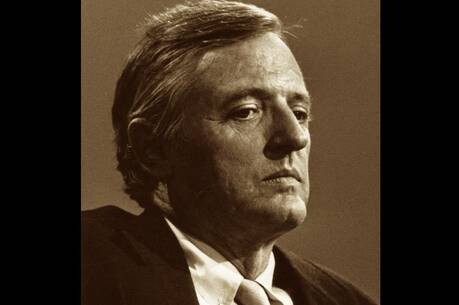Body (Re)Building
Dry Bones Rattling is a study of the community-organizing work of the Industrial Areas Foundation (I.A.F.) in Texas and the Southwest. The title comes from the story of Ezekiel in the valley of the dry bones, the broken and dispirited community of Israel. As Ezekiel prophesied, the bones rattled and came together into a vast army of flesh and blood, filled with life and hope. So too, the author Mark Warren argues, can communities come together today, through prophetic leadership and hard work.
Warren is a member of the faculty of sociology and anthropology at Fordham University in New York. Frustration with the current state of democratic politics in America motivated him to look for examples of participative civic action that seemed to be working. He found such an example in South Texas and spent six years doing the field work for this book, which he describes as a political ethnography. He came away a fan of the I.A.F., and the book explains why. (Full disclosure: I too am a fan of the I.A.F. I have worked with, and my parish is a member of, its Boson affiliate, the Greater Boston Interfaith Organization.)
The Industrial Areas Foundation grew out of the organizing work of Saul Alinsky in southwest Chicago in the 1940’s. Alinsky developed a set of techniques for organizing the poor that proved both effective and controversial. He rooted his organizing efforts in existing community institutions, including religious congregations, and used the strength of these organizations in mobilizing constituencies to confront political power structures in pursuit of concrete victories for poor communities.
Alinsky himself was not particularly interested in the values or beliefs of the congregations he organized; he saw them, like other community institutions, as power bases. After his death, however, the new leadership of the I.A.F., especially Ernesto Cortes (the hero of Warren’s tale), developed a more explicit theology of organizing. From his work with Latino Catholic parishes in San Antonio, Corteshimself a deeply committed Catholiccame to understand that the affirmation of all persons as children of God and the sense of community implicit in religious organizations could motivate powerless people to do things they never would have thought themselves capable of. And he also came to understand that community organizing was consistent with the mission of churches to build a better world for God’s people.
On these insights, Cortes and his team built a powerful set of community organizations in Texas and the Southwest, which have over the years amassed an impressive record of accomplishment. They expanded sanitation and water supplies in the border communities, improved schools in Austin and San Antonio and ran effective job training programs, among others. Just as important, the I.A.F. developed a well-trained, confident and competent cadre of leaders, many of them women, most of them Latina/o, all from the community. The organizations have proved to have staying power, working year after year and becoming respected power bases in their communities and in the state.
Warren devotes two of his nine chapters to an analysis of the I.A.F. efforts to build multiracial coalitions. The I.A.F. strategy of organizing is relational. It is based on thousands of one-on-one meetings both within and across member congregations, through which people come to understand one another’s values and interests, and to explore ways in which they can work together for their mutual good. This strategy provides a potentially powerful base for developing genuinely multiracial coalitions of people who know one another personally and often share a deep faith. It is not always smooth sailing, as Warren illustrates with his descriptions of missteps and difficulties over some racially charged issues in Dallas. Nonetheless, Warren sees these efforts as perhaps the country’s best chance for overcoming the racial divisions that so plague our polity.
Warren devotes another long chapter to Project Quest, a job training program developed by the I.A.F. in San Antonio, and considered by many experts in the field to be one of the best models around. The development of Project Quest illustrates other aspects of the I.A.F. strategy, particularly its willingness to work with government and big business and to make use of technical experts, when those groups can be helpful. Neither allies nor enemies are seen as permanent. The I.A.F. organizations continually work to bring people on board, but also continually challenge community elites to deliver on their commitments to the poor.
Warren places his analysis in the context of an analysis of the importance of social capital to civic life and democratic politics. His first chapter is a very good discussion of this literature and of the links between civic and political life. He concludes that the I.A.F. in the Southwest provides a model from which much can be learned about how to revitalize both poor communities and political life in pursuit of the common good. Warren says much less about the effects of the I.A.F. on the churches themselves, though he does take note of the positive effects of organizing on parish development.
The I.A.F. has been notoriously poor about documenting its philosophy, strategy, tactics, successes and failures. Its organizers organize rather than write; many of them (Cortes is an exception here) have a barely concealed disdain for academic analysis and the people who do it. Warren has done both the I.A.F. and the interested public a great service with his careful fieldwork, ample documentation and nicely written reporting. There is more to be said, of course, but this book is a fine introduction to what I, like Warren, believe to be an extremely important and promising social movement.
This article also appeared in print, under the headline “Body (Re)Building,” in the November 5, 2001, issue.








